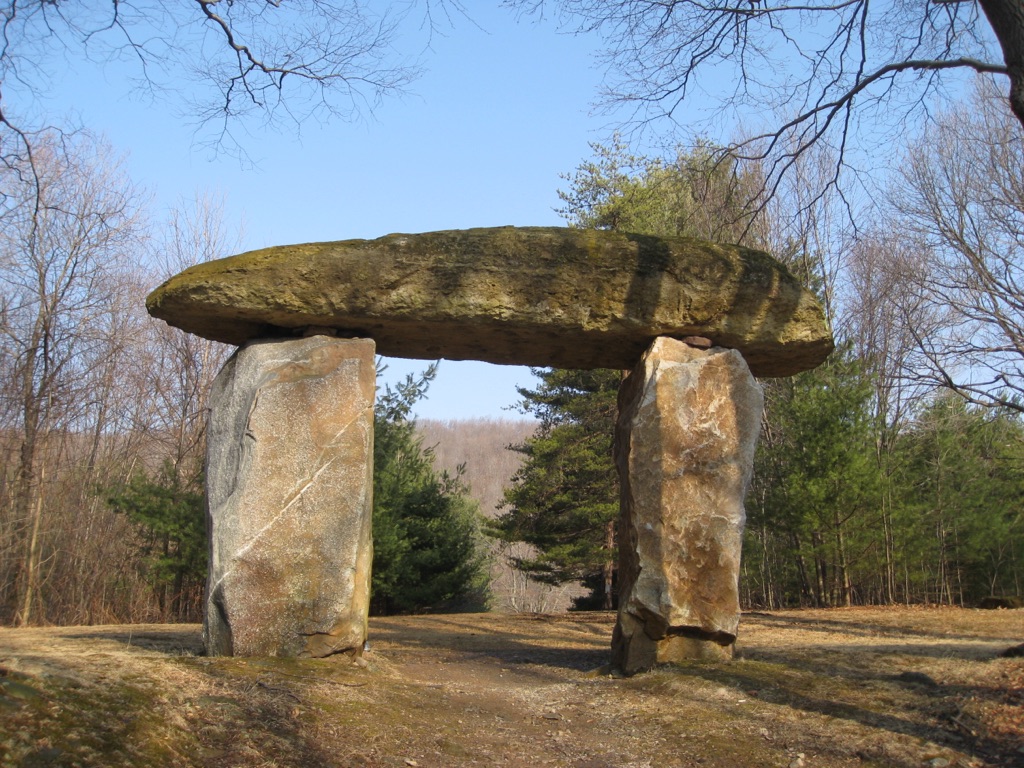Columcille Megalith Park, situated in the foothills of the Appalachian mountains in eastern Pennsylvania, stands as a remarkable embodiment of the intersection between visionary passion, prehistoric traditions, and environmental communion. Spanning over seventeen acres of gently rolling hills, glens, woods, and meadows, the park is home to nearly ninety settings of megaliths. These megaliths draw inspiration from the prehistoric late-Neolithic period, a time marked by a cultural and technological transformation that saw the ritual arrangement of giant standing stone alignments, ceremonial circles, Menhirs, a gigantic Trilithon, burial dolmens, Cairns, a labyrinth, and other monumental creations.
Get your dose of History via Email
The park’s inception
The park’s inception and evolution can be traced back to the singular visionary passion of its founder, William H. Cohea, Jr. Cohea, who passed away recently, was a man of diverse interests and commitments, including serving as a Presbyterian minister, an ecumenical advocate for social ministry, and a human-rights activist. His transformative vision for the park was inspired by a visit to the island of Iona off the southwestern coast of Scotland in 1977. It was there that he experienced a revelatory connection to the ancient megaliths and the advent of Celtic Christianity on the island. This vision propelled him to embark on his life’s work: to recreate the spirit of these ancient stones in the New World, offering a place of solace and regeneration for pilgrims.
The park’s megaliths
The park’s megaliths, primarily placed between 1980 and 2005, were sourced from local slate quarries or found on-site, with an age estimation of approximately 3.6 billion years. Among these, the Remembrance Stone and the Goblin Stone stand out for being set by hand under the guidance of Jackie and Rob Roy, using ancient techniques. The park also features several cut granite stones gifted by Kristene Beck of Kinstone Park in Minnesota. The naming of the stones, often whimsical and varying depending on the storyteller, adds a layer of personal connection and narrative to the landscape.
Beyond the megaliths, Columcille Megalith Park is a sanctuary of natural beauty and tranquility. Its trails wind through hardwood forests, vernal ponds, and sheltered dells, inviting visitors to immerse themselves in the ancient majesty of the forest and perhaps, encounter the mythical Faerie Folk. The park’s commitment to environmental communion is further exemplified by the Skyy Lane Resource Center, a space created through the generosity of Skyy Lane, a longtime friend and supporter of the park. This center serves as a welcome area and provides resources for visitors to learn more about the park and its founders.
Other details
Columcille Megalith Park is not only a place of quiet inspiration and meditation but also serves as an outdoor art park, environmental retreat, and educational laboratory. It offers a unique opportunity to experience and understand the intertwined aspects of cultural, artistic, technological, and religious development. The park’s design, inspired by the Celtic and Christian overlays of earlier megalithic traditions, includes a six-sided chapel and a cylindrical bell tower, both constructed from uncut stone, further cementing its connection to ancient practices and beliefs.
Recognized by the Smithsonian American Art Museum as the only Megalith Park and Celtic Art Center in the United States, Columcille Megalith Park remains a testament to the enduring human fascination with our natural environment and the ancient practices that sought to understand and celebrate it. It stands as a monument to William H. Cohea, Jr.’s vision, offering a space for regeneration, learning, and reflection for all who visit.
Sources:

